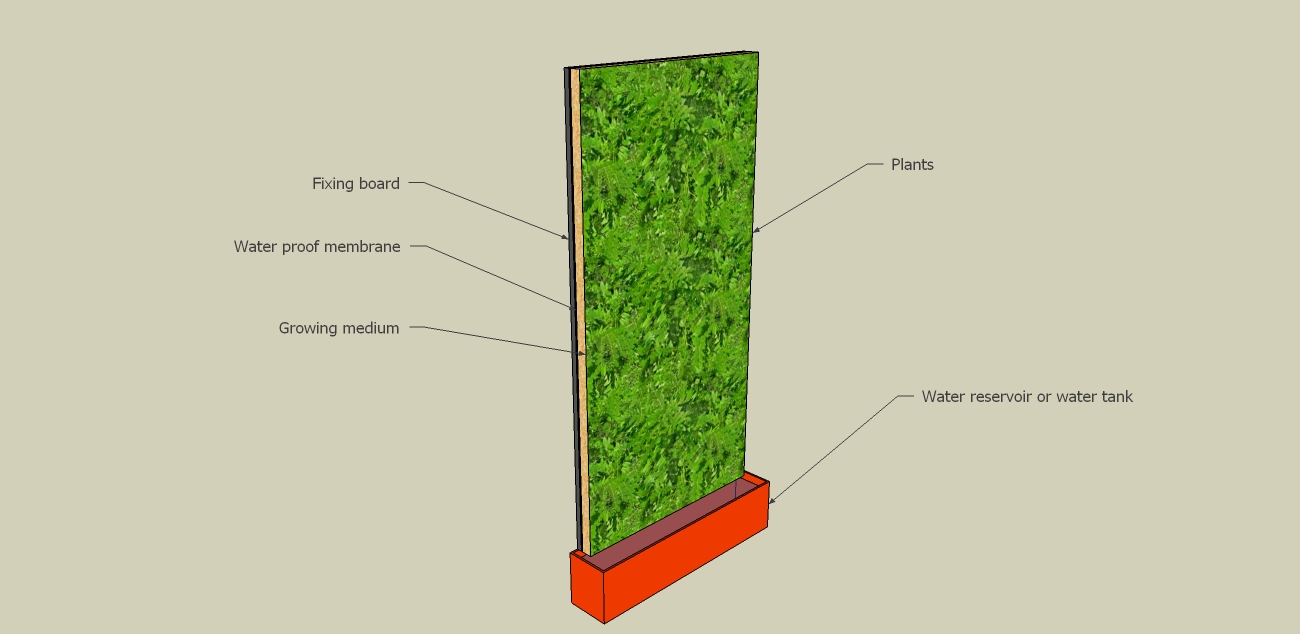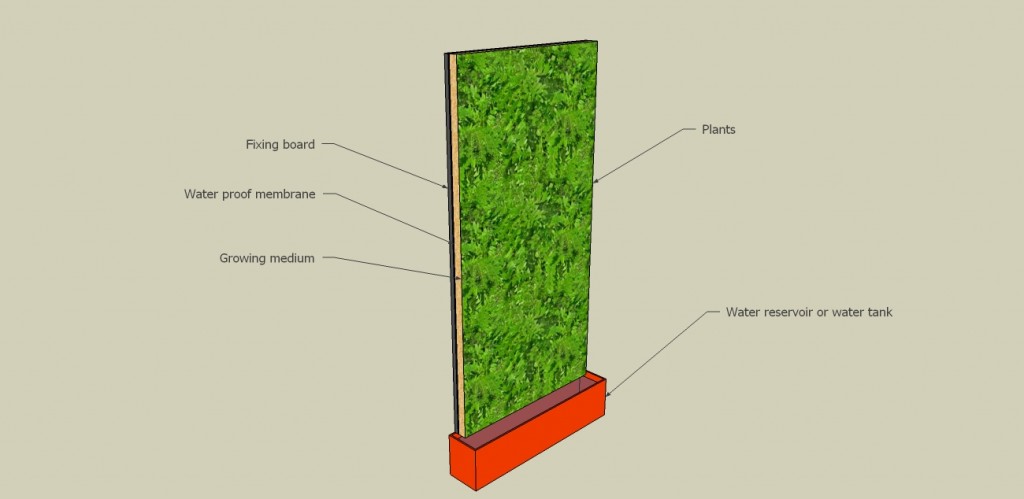It is interesting to see that even though vertical gardens techniques have been available for decades now, and that their effectiveness has been proved and verified the world over, using plants to render buildings or to insulate rooftops still isn’t a common practice. At least in Australia.
But this is about to change!
The demand is there, and the techniques as well… so why isn’t the whole city greening up then?
Lets have a look at the different techniques available, and see what is their potential:
Soil based vertical gardens
Soil is quite an obvious medium to plant plants in. That’s how most plants grow like in nature, with their roots in the soil, and their leafs in the air!
Nows that’s simple enough, where it gets complicated, is when we try to hold soil vertically. A few points can help us understand why:
- With time, soil compresses. Most of us have experienced it with pot plants or raised garden beds; you fill them to the brim now, and in a few months the soil level has come down drastically. This is why all soil based systems worthy mentioning (if any!) offer a way to compartmentalise the soil.
- Soil is very heavy. But wet soil is absurdly heavy. This means the structure supporting the vertical garden needs to be very well engineered and built to withstand the weight of it.
Because of this, most soil based systems are in fact simply a number of stacked up pots, of different construction and shape. Whether they are terra cotta pots on a welded steel structure (sob!) or a plastic crate/box system with geotextile or holes allow for drainage. In time the soil will compress down and will need to be replenished.
Now, even though they re limited in their broad scale applications, they have a few significant advantages:
- Soil is an amazing substance. When it contains the right amount of organic and inorganic material, it can hold tremendous amount of moisture, nutrients and invertebrates.
- This moisture retention allows to reduce the watering regime and increases the resilience of the garden drastically.
- It is quite easy to build a soil based vertical garden using food grade materials.
- A small soil based green wall can provide a minimum of fresh herbs and greens to urban dwellers.
Unfortunately soil based vertical gardens tend to look a bit rough, and because of the engineering difficulty of using such a heavy material, their potential is somewhat limited.
Luckily though, Libertas Gardens has been working on a hybrid system that allows us to build larger soil based vertical gardens. Contact us for a free quote!
Climber gardens
If you want the maximum effect for the minimum monetary investment, that’s probably your best choice! Very large vertical areas can be covered by plants growing from a tiny space. The classic example all of us can relate to in Melbourne, is the classic Mediterranean inspired technique of growing grapes over a driveway or a concrete path, a grape that is planted in a little opening made in the concrete driveway or brick path. A square foot on the ground, allows to cover dozens of square meters in the air.
We have been building many climbing green walls over the last few years. High grade stainless decking wire, reinforcing steel mesh, simple galvanised wire or even self adhering climbers… the variations are limitless. These gardens can be adapted to most positions and budgets.
Try mixing your climbing plants too, we are very lucky in Melbourne that we can grow both deciduous and evergreen climbers. This means we can get flowers in spring in summer, fruit in summer and autumn, colors in autumn and winter and once again flowers in spring and summer!
Hydroponic gardens
That’s the Rolls of vertical gardens. There is no way around it, nothing beats hydroponic when it comes to vertical gardens. Depending on the size plants the garden is planted with, the cost needn’t be too high either.
The idea is to do without soil, and to grow your plants in a non biodegradable substrate. At Libertas Gardens, we have sourced 100% recycled materials that we use as a growing medium.
Water supplemented with nutrients is pumped through the garden at regular times, and the plants root that grow themselves through the growing medium can hence access water and nutrients. This regular watering means the growing medium can be very thin, and yet the plants roots will not dry out. To give an example, we have built south facing living walls that are less then 2 centimeters thick! That is both cheap in terms of materials, but also extremely light.
The water is cycled indefinitely through the garden, with minimal toping up needed. We have experimented using soluble hydroponic solution as well as using living fish to provide nutrients to the plants. Both successfully! That’s right… fish living in the water, fertilising the plants with their refuse! Just like aquaponics, but vertically!
See this 3d plan example of a stand alone hydroponic vertical gardens:

The beauty of these green walls is that they can be fitted to practically any wall or post, built indoor or outdoor, built as stand alone pieces of covering an entire house.
Imagination is the only limit!
Hopefully this post will help those trying to build their own raised garden and inspire those looking to make use of vertical space to grow luscious gardens.
Visit our vertical gardens page for a few pictures


